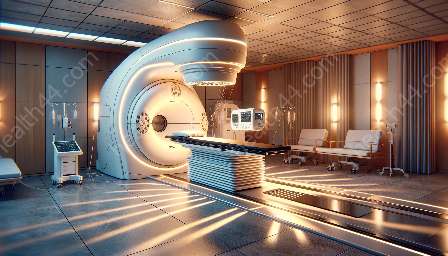Modern medical practices heavily rely on radiation therapy machines and various medical devices and equipment to ensure accurate diagnosis and treatment. However, the use of radiation in healthcare also poses risks, making radiation monitoring equipment an essential component for safety and precision. Understanding the significance and functions of radiation monitoring equipment is crucial for maintaining a secure and efficient healthcare environment.
The Role of Radiation Therapy Machines in Healthcare
Radiation therapy machines are crucial in providing effective treatment for certain types of cancer and other medical conditions. These machines emit ionizing radiation, which can be harmful if not used properly. When treating patients, it's important to ensure that radiation therapy machines operate within safe parameters to prevent unnecessary exposure to radiation.
Medical Devices and Equipment Utilizing Radiation
Various medical devices and equipment, such as X-ray machines and CT scanners, utilize radiation to create diagnostic images and perform medical procedures. These devices are essential for accurate diagnoses and treatment planning. However, the use of radiation in these devices also demands careful monitoring to minimize potential hazards to patients, healthcare professionals, and the general public.
Understanding Radiation Monitoring Equipment
Radiation monitoring equipment plays a critical role in ensuring the safe and efficient use of radiation therapy machines and medical devices. These devices are designed to detect, measure, and monitor levels of ionizing radiation in healthcare environments. By continuously monitoring radiation levels, these tools help to maintain a secure working environment and prevent unnecessary radiation exposure.
Types of Radiation Monitoring Equipment
There are various types of radiation monitoring equipment, including:
- Personal Dosimeters: Worn by individuals who may be exposed to radiation, these devices measure the radiation dose received by the wearer.
- Area Monitors: Used to continuously monitor radiation levels in specific areas of healthcare facilities, such as treatment rooms and imaging laboratories.
- Environmental Monitoring Systems: These systems monitor the overall radiation levels and environmental conditions within healthcare facilities.
- Handheld Survey Meters: Portable devices used to measure radiation levels in specific locations, such as around radiation therapy machines and medical devices.
- Continuous Air Monitors: These devices monitor the air for the presence of radioactive particles and gases.
The Importance of Radiation Monitoring Equipment in Healthcare
Radiation monitoring equipment is vital for healthcare facilities for the following reasons:
- Patient Safety: By ensuring that radiation levels are within safe limits, these devices help protect patients from unnecessary radiation exposure during diagnosis and treatment.
- Occupational Safety: Healthcare professionals working with radiation therapy machines and medical devices need to be protected from excessive radiation exposure, which can be achieved through the use of monitoring equipment.
- Regulatory Compliance: Healthcare facilities must adhere to strict regulations regarding radiation safety, and the use of monitoring equipment ensures compliance with these standards.
- Environmental Protection: Monitoring radiation levels helps prevent the release of radioactive substances into the environment, reducing the risk to surrounding communities and ecosystems.
Integration with Radiation Therapy Machines
Radiation monitoring equipment is seamlessly integrated with radiation therapy machines to ensure that radiation levels are constantly monitored and controlled during treatment sessions. This integration allows for real-time feedback and adjustments, minimizing the risk of overexposure and ensuring the effectiveness of the treatment.
Enhancing Medical Devices and Equipment Safety
By incorporating radiation monitoring equipment into the operation of medical devices and equipment, healthcare facilities can enhance the overall safety and reliability of these technologies. This proactive approach helps to mitigate the potential risks associated with the use of radiation in diagnostic and treatment procedures.
Training and Maintenance
Proper training in the use of radiation monitoring equipment is essential for healthcare professionals to effectively operate and interpret the data provided by these devices. Additionally, regular maintenance and calibration of monitoring equipment are crucial to ensure accurate and reliable performance.
Conclusion
Radiation monitoring equipment is indispensable in modern healthcare, particularly in the context of radiation therapy machines and medical devices utilizing radiation. These instruments play a pivotal role in safeguarding patients, healthcare professionals, and the environment from the potential hazards associated with ionizing radiation. By understanding the functions, types, and significance of radiation monitoring equipment, healthcare facilities can ensure the safe and effective use of radiation in medical practices.


